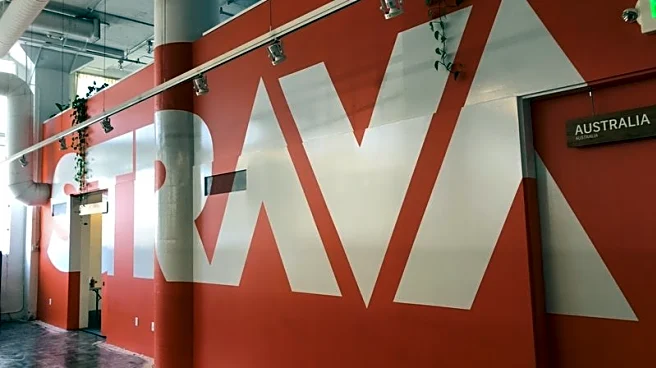What's Happening?
The development of flying cars, including vertical takeoff air taxis and roadable cars, is advancing rapidly with companies like Alef Aeronautics, Joby Aviation, and XPeng AeroHT leading the charge. These vehicles, which can carry 2-6 people, are designed to alleviate urban traffic congestion by providing an airborne rideshare service. However, experts warn that without careful integration, this could lead to a 10% increase in traffic chaos in the skies. Recent breakthroughs include Alef Aeronautics receiving a special FAA certificate for test flights and Joby Aviation advancing in FAA certification stages. Regulatory bodies like the FAA and EASA are working on new frameworks to accommodate these vehicles, with the FAA finalizing rules for powered-lift pilot certification effective in 2025.
Why It's Important?
The introduction of flying cars could significantly impact urban transportation, potentially reducing road congestion and offering faster commute options. This innovation is projected to create a $1+ trillion market by 2040, according to Morgan Stanley. However, the transition poses challenges, including air traffic management, safety concerns, and noise pollution. The success of flying cars depends on regulatory frameworks, technological advancements, and public acceptance. While they promise to transform urban mobility, they also risk creating new layers of complexity in air traffic management and safety protocols.
What's Next?
As flying car technology progresses, regulatory bodies will continue to refine certification processes and operational guidelines. Companies are targeting 2025-2026 for the launch of initial commercial flying taxi services, with cities like Dubai and New York preparing infrastructure for these vehicles. The industry will need to address public concerns about safety and noise, and demonstrate the viability of these vehicles in real-world scenarios. The coming years will be crucial in determining whether flying cars become a mainstream transportation option or remain a niche innovation.
Beyond the Headlines
The development of flying cars raises ethical and environmental questions, such as the potential for increased energy consumption and emissions if not managed properly. The integration of these vehicles into urban environments will require careful planning to avoid exacerbating social inequalities, as access to flying cars may initially be limited to wealthier individuals. Additionally, the impact on urban planning and infrastructure, including the need for vertiports and charging stations, will be significant. The industry must balance innovation with sustainability and social responsibility to ensure a positive impact on society.











